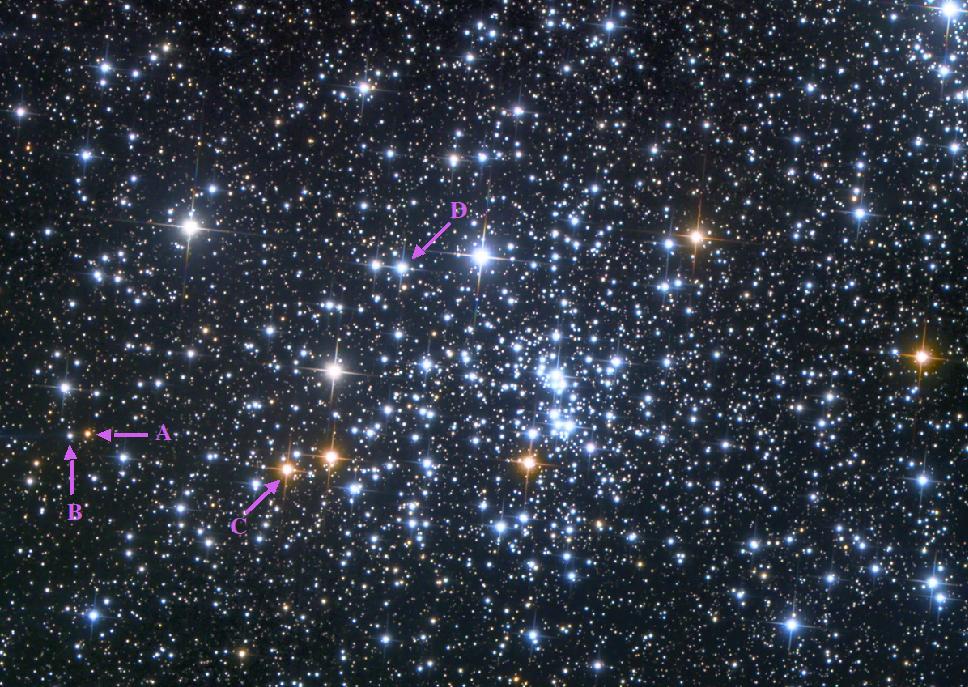Be sure to show your work, do your own work, and put your name and row letter on it and write legibly. If I can't read it, I can't grade it.
Do on your own paper- do not turn in any images.
If an answer is numerical you must show the equation for credit.
1) About what fraction of stars have planets?
A) Close to 0% (nearly just us)
B) 10%
C) 50%
D) 90%
2) Which star is the coolest?
A) Yellow
B) Red
C) Orange.
D) Violet
E) Blue
3) What is the temperature of a star with a peak in its spectrum at 475 nm?

The following five questions are about the picture at the top of this page.
The picture is of the open cluster Chi Persii also called NGC 884. This cluster is about 7,000 light years away from Earth, but only about 200 light years deep. So we can assume that all stars in the image are at the same distance from us (this is a 3% error) and formed at the same time.
4) What does the size and color of the dots represent?
5) Assuming that stars A and B have the same size dot, what is their difference (other than temperature)?
6) Assuming that stars B and D have the same color, what is their difference?
7) Which of the lettered stars in the image will likely be around the longest? (Section 22.1)
A cloud collapses to form 4 stars. Star A is 12 solar masses, Star B is 3 solar masses, Star C is 0.8 solar masses and star D is 0.4 solar masses. These stars all begin the main sequence at the same time and would be roughly the same distance from us.
8) What is the total luminosity of these 4 stars (in solar units) on the main sequence?
9) After 15 billion years, how many stars are still on the main sequence?
10) What provides the energy against collapse for a horizontal branch star?
11) What is the main sequence luminosity and lifetime for a 2.5 solar mass star?
LMS= M3.5 (for mass in solar units)
tMS=1x1010/M2.5 (for mass in solar units and you get time in years.)
12) How will our Sun end? (What is its last stage of evolution?) (